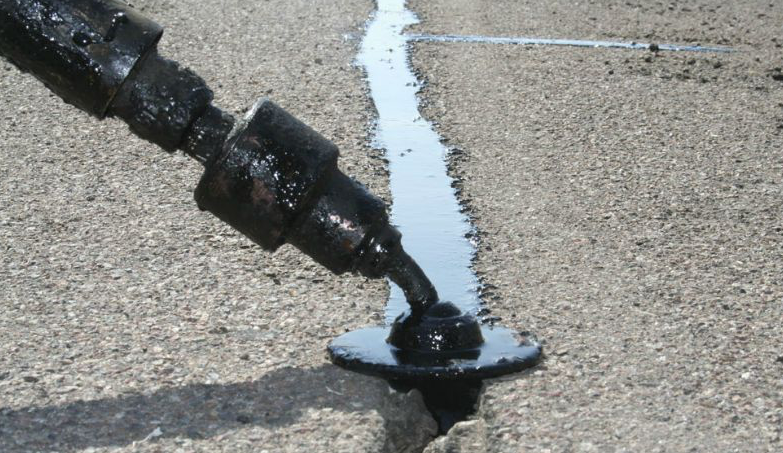Unlock the Secrets of Asphalt Sealing: Taking Full Advantage Of Warm Mix Asphalt Long Life
Unlock the Secrets of Asphalt Sealing: Taking Full Advantage Of Warm Mix Asphalt Long Life
Blog Article
Hot Mix Asphalt: A Lasting Remedy for Pavement
Hot Mix Asphalt (HMA) has emerged as a leading sustainable choice for pavement remedies, offering a myriad of ingenious technologies and ecological advantages. As the demand for green construction methods expands, checking out the subtleties of HMA's sustainability can provide valuable insights right into the future of pavement solutions.
Environmental Advantages of Warm Mix Asphalt

Additionally, Hot Mix Asphalt helps to reduce urban warmth island effects. Its dark shade takes in sunlight, lowering the quantity of heat showed back right into the ambience contrasted to lighter-colored pavements. This can decrease ambient temperatures in urban areas, decreasing the need for cooling and eventually reducing power intake.
Additionally, Warm Mix Asphalt contributes to boosted stormwater monitoring. Its permeable nature enables water to penetrate the pavement and charge groundwater supplies, minimizing runoff and the threat of flooding. These ecological advantages make Warm Mix Asphalt a sustainable option for leading highways and roadways.
Energy Performance in HMA Production
Is power effectiveness a critical element in the manufacturing of Hot Mix Asphalt (HMA)? Power plays a significant function in the manufacturing of HMA, influencing both price and ecological sustainability. One key element of energy effectiveness in HMA production is the use of cozy mix asphalt (WMA) innovations.
Moreover, advancements in plant innovations have actually led to more energy-efficient HMA manufacturing processes. By enhancing power usage in HMA production, the market can decrease its carbon impact while keeping top notch pavement products.
Recyclability of Warm Mix Asphalt
The recyclability of Hot Mix Asphalt (HMA) is a critical element of its sustainability and long-term environmental effect. HMA is just one of the most recycled products in the USA, with over 100 million lots of recovered asphalt sidewalk (RAP) being recycled annually in brand-new sidewalk building and construction. Recycling HMA provides numerous ecological benefits, such as minimizing the demand for virgin products, lowering energy intake throughout manufacturing, and lowering the amount of waste sent to landfills.
The procedure of reusing HMA includes milling the existing sidewalk, squashing it right into smaller pieces, and mixing it with brand-new aggregate and asphalt binder to create a recycled mix. In general, the recyclability of HMA plays a considerable role in advertising sustainable techniques within the pavement sector.

Long-Term Efficiency of HMA
Asphalt pavements demonstrate sturdiness and strength over an extended period, reflecting the long-lasting efficiency of Hot Mix Asphalt (HMA) The long life of HMA can be associated to its capacity to endure hefty web traffic tons, severe climate condition, and the impacts of aging. Studies have revealed that properly designed and effectively created HMA sidewalks can last for two decades or even more with routine maintenance. The secret to maximizing the lasting efficiency of HMA hinges on utilizing high-quality products, complying with best techniques in building, and applying effective upkeep strategies. Correct drain, routine examinations, and prompt repair work are important for maintaining the structural integrity of HMA sidewalks gradually. In addition, advancements in HMA innovation, such as using polymer-modified binders and cozy mix asphalt, have actually even more boosted the resilience and longevity of HMA sidewalks. By focusing on high quality construction and upkeep practices, HMA continues to confirm itself as a affordable and sustainable solution for lasting pavement infrastructure.

HMA: Toughness and Sustainability
Demonstrating both longevity and sustainability, Warm Mix Asphalt (HMA) has become a keystone in the building of resilient sidewalk frameworks - commercial parking lot paving. HMA's longevity originates from its capability to hold up against heavy dig this loads, rough weather, and high traffic volumes, making it a dependable choice for roads, highways, and airport paths. The structure of HMA, which commonly consists of accumulations, binder, and filler, plays a crucial duty in improving its long life and resistance to damage
Moreover, HMA's sustainability depends on its recyclability and energy-efficient production procedure. The capability to recycle reclaimed asphalt pavement (RAP) in new HMA combinations minimizes the demand for virgin products and lessens the environmental effect of pavement building and upkeep. Furthermore, the power performance of generating HMA hinges on its reduced mixing temperatures compared to other pavement materials, causing minimized energy intake and greenhouse gas emissions.
Conclusion
In conclusion, warm mix asphalt (HMA) provides a sustainable option for sidewalk with its eco friendly attributes. HMA's recyclability, power efficiency in production, and long-term sturdiness make it an environment-friendly option for roadway building. By preserving natural deposits, reducing waste, and lowering greenhouse gas discharges, HMA plays a vital duty in advertising sustainability in facilities growth. Its ability to reduce urban warm island results additionally emphasizes its value in producing eco aware and resistant sidewalk systems.
HMA is one of the most recycled products in the United States, with over 100 million lots of redeemed asphalt sidewalk (RAP) being content reused annually in brand-new sidewalk building and construction.The process of recycling HMA entails crushing the existing pavement, crushing it right into smaller pieces, and blending it with brand-new aggregate and asphalt binder to produce a recycled mix.Asphalt pavements show resilience and strength over an extended duration, reflecting the long-term performance of Hot Mix Asphalt (HMA) In addition, innovations in HMA technology, such as the use of polymer-modified binders and warm mix asphalt, have actually better enhanced the toughness and durability look at here of HMA pavements. The capability to recycle recovered asphalt pavement (RAP) in brand-new HMA mixtures reduces the demand for virgin products and minimizes the environmental impact of sidewalk building and construction and maintenance.
Report this page